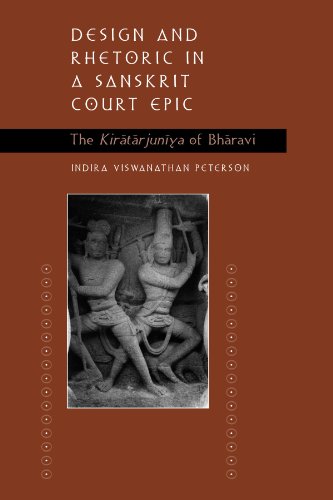

Most ebook files are in PDF format, so you can easily read them using various software such as Foxit Reader or directly on the Google Chrome browser.
Some ebook files are released by publishers in other formats such as .awz, .mobi, .epub, .fb2, etc. You may need to install specific software to read these formats on mobile/PC, such as Calibre.
Please read the tutorial at this link: https://ebookbell.com/faq
We offer FREE conversion to the popular formats you request; however, this may take some time. Therefore, right after payment, please email us, and we will try to provide the service as quickly as possible.
For some exceptional file formats or broken links (if any), please refrain from opening any disputes. Instead, email us first, and we will try to assist within a maximum of 6 hours.
EbookBell Team

4.4
52 reviews
ISBN 10: 0791487415
ISBN 13: 9780791487419
Author: Indira Viswanathan Peterson
Explores the earliest literary treatment of Arjuna's combat with the great god Siva, providing an introduction to the Sanskrit court epic."Peterson proves that it is possible and fruitful to approach mahakavya such as 'Arjuna and the Hunter' through the aesthetic values it embodies. She succeeds in making one of the greatest works of literature accessible and meaningful to non-specialists, as well as useful for teachers of South Asian culture and religion." — History of Religions Indira Viswanathan Peterson provides an introduction to the Sanskrit court epic (mahākāvya), an important genre in classical Indian poetry, and the first study of a celebrated sixth-century poem, the Kirātārjunīya (Arjuna and the Hunter) of Bhāravi. Sanskrit court epics are shown to be characterized both by formalism and a deep engagement with enduring Indian values. The Kirātārjunīya is the earliest literary treatment of the narrative of the Pandava hero Arjuna's combat with the great god Śiva, a seminal episode in the war epic Mahābhārata. Through a close analysis of the structural strategies of Bhāravi's poem, the author illuminates the aesthetic of the mahākāvya genre. Peterson demonstrates that the classical poet uses figurative language, rhetorical devices, and structural design as the primary instruments for advancing his argument, the reconciliation of heroic action, ascetic self-control, social duty, and devotion to God. Her discussion of the Kirātārjunīya in relation to its historical setting and to renderings of this epic episode in literary texts and temple sculpture of later periods reveals the existence of complex transactions in Indian civilization between the discourses of heroic epic and court poetry, political ideologies and devotional religion, Sanskrit and the regional languages, and classical and folk traditions. Selections from the Kirātārjunīya are presented in poetic translation.
1. Introduction: The Study of the Sanskrit Court Epic
2. The Poetics of the Mahakavya
3. The Setting and Structure of the Kiratarjuniya
4. Prelude to Action: Epic Speech in Bharavi’s Poem
5. The Debate between the Brothers: Logic, Rhetoric, and Politics in the Court Epic
6. Landscapes with Women: Bharavi’s Descriptive Art
7. The Conundrum of the Warrior-Ascetic
8. The Theater of Combat
9. Wrestling with God: Rasa and Bhakti in the Kiratarjunıya
A Note on the Translation Selections
Appendix A. Draupadi Rebukes Yudhisthira: Kir. I. 27-46
Appendix B. The Journey of the Apsaras: Kir. VII. 1-40
Appendix C. Arjuna's Combat with the Hunter: Kir. XVII. 1-64
Appendix D. The Wrestling Match, Theophany, and Boon: Kir. XVIII. 1-19; 42-48
design rhetoric
design rhetorical definition
declaration by design rhetoric argument and demonstration in design practice
rhetoric of design
rhetoric and the arts of design
Tags: Indira Viswanathan Peterson, Design, Rhetoric, Sanskrit